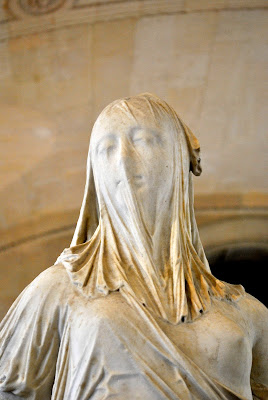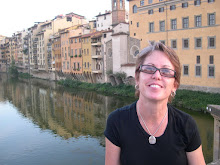The Louvre
Huge and impossible to see in one day, we of course, head straight for the Mona Lisa along with every other tourist. The organizer in me is appalled at the mad swarm in front of this famous small portrait of the woman with the impish smile. From behind the crowd, which is at least 10 jostling people deep, you can barely see the top half of the painting, add to that the dozens of arms in mid-air with camera attached in hopes of miraculously snapping a shot free-form style and your hopes of getting close are somewhat dashed; this is not for the weak of heart.
Why isn’t there a que? People could enter from one side, spend a couple minutes, snap their pictures and be escorted out of the way from the other side. Oh well, no pain, no gain right? I dive in and slowly make my way forward. Each time a person from the front turns to leave, fighting against the crowd to make their way out, people from each side and behind inch forward to close the gap. I don’t make it to the very front, but do manage to get close enough to get an unobstructed view for the five seconds it takes me to snap a photo. I would much prefer to stand and comtemplate, especially a painting with as much history and mystery as this, but as Mick Jagger said, “You can’t always get what you want.”
 |
| Venus de Milo |
 |
| The Dying Slave |
 |
| Psyche and Cupid |
The Musee d’Orsay is much more manageable than the Louvre; it is smaller and currently has a couple of exhibitions closed as they are in the middle of a move. Unfortunately, there is no photography allowed.
From the map we determine there are several rooms we’d like to visit and head off in the direction of the James Tissot exhibition. Tissot was known for his paintings of young women; all fully clothed. For a good commentary on his portrait of the Marquis and Marchioness of Miramon go to: http://www.musee-orsay.fr/en/collections/works-in-focus/painting/commentaire_id/portrait-of-the-marquis-and-marchioness-of-miramon-and-their-children-8790.html?tx_commentaire_pi1[pidLi]=509&tx_commentaire_pi1[from]=841&cHash=3654df84b5
As we move to the next gallery we are surprised upon an exhibition by Claude Monet, one of my favorite artists, not listed on the guide. There is a teacher giving a lecture to what seems a high school class in front of the Luncheon on the Grass. The canvas was huge when painted and is in two pieces and there are obviously other pieces missing. Monet painted this in 1865-1866; at the time he couldn’t pay his rent and he gave the canvas to his landlord to hold. When he could finally afford to pay the landlord, the canvas had been rolled up in the landlord’s cellar for several years and was ruined. Monet cut it up into three pieces, two of which are at the Musée d’Orsay, the third was lost.
Edouard Manet also did a Luncheon on the Grass (1865) painting and it too is housed at the Musée d’Orsay. In this painting there are two men and a nude woman who has obviously just finished bathing in the river (there is another woman along the water’s edge in the background). This was pretty scandalous at the time. The woman gazes out at the audience seemingly mindless of her nakedness. The fact that the two men are fully clothed makes her nakedness even more striking. My absolute favorite is Olympia. Painted by Manet in 1863. This painting caused an outrage at the 1865 Salon. I love the shamelessness with which the young woman looks out at the audience, naked save for her shoes. She looks so young, but knowing beyond her years.
There are several Vincent Van Gogh paintings on display, the most famous his self-portrait.
 |
| David, Me, Mark, Mari, Mike, Mary & Leigh |
For more pictures click here.



No comments:
Post a Comment